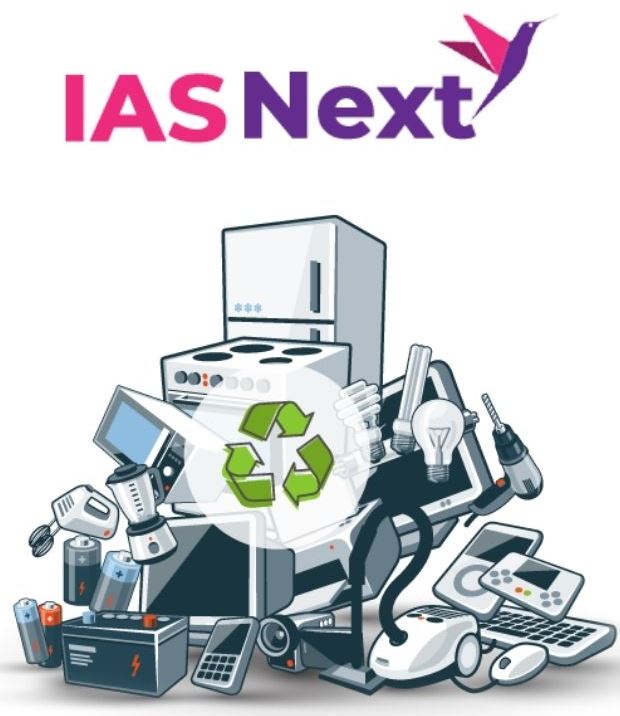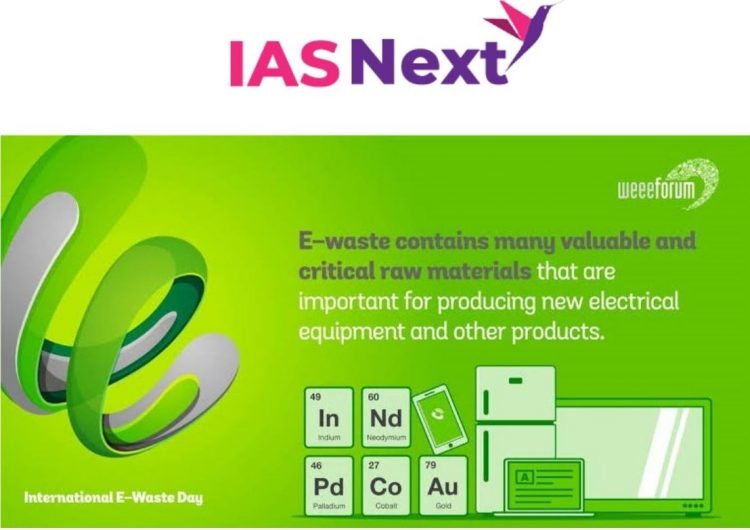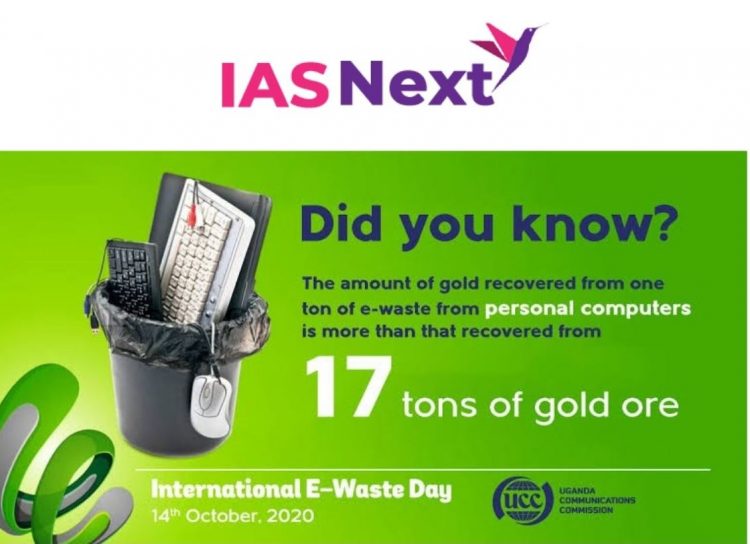CURRENT AFFAIRS
Get the most updated and recent current affair content on Padhaikaro.com
14th October International e-Waste Day
- IAS NEXT, Lucknow
- 20, Oct 2021

International e-Waste Day has been observed on October 14 every year since 2018.

How much E-waste is generated across the world?
- Last year’s Global E-waste Monitor reported that 53.6 MT of waste electronic and electrical equipment were generated in 2019.
- That represented a 21 per cent jump in the five years since 2014 (with e-waste predicted to reach 74 MT by 2030).
- E-waste generation was increasing annually by 2 MT.
- The rise is attributed to a higher consumption rate of electronics, shorter product lifecycles and limited repair options.

Impacts of e-waste:
Toxicity: E-waste consists of toxic elements such as Lead, Mercury, Cadmium, Chromium, Polybrominated biphenyls and Polybrominated diphenyl.
Effects on Humans: Some of the major health effects include serious illnesses such as lung cancer, respiratory problems, bronchitis, brain damages, etc due to inhalation of toxic fumes, exposure to heavy metals and alike.
Effects on Environment: E-waste is an environmental hazard causing groundwater pollution, acidification of soil and contamination of groundwater and air pollution due to the burning of plastic and other remnants.
E- waste in India:
- According to the Central Pollution Control Board (CPCB), India generated more than 10 lakh tonnes of e-waste in 2019-20, an increase from 7 lakh tonnes in 2017-18. Against this, the e-waste dismantling capacity has not been increased from 82 lakh tonnes since 2017-18.
- In 2018, the Ministry of Environment had told the tribunal that 95% of e-waste in India is recycled by the informal sector and scrap dealers unscientifically dispose of it by burning or dissolving it in acids.
Efforts by India to manage e-waste:
Laws to manage e-waste have been in place in India since 2011, mandating that only authorised dismantlers and recyclers collect e-waste.
E-Waste Management Rules, 2016:
The Ministry of Environment, Forest and Climate Change notified the E-Waste Management Rules, 2016 in supersession of the E-waste (Management & Handling) Rules, 2011.
- Over 21 products (Schedule-I) were included under the purview of the rule. It included Compact Fluorescent Lamp (CFL) and other mercury containing lamps, as well as other such equipment.
- For the first time, the rules brought the producers under Extended Producer Responsibility (EPR), along with targets. Producers have been made responsible for the collection of E-waste and for its exchange.
- Various producers can have a separate Producer Responsibility Organisation (PRO) and ensure collection of E-waste, as well as its disposal in an environmentally sound manner.
- Deposit Refund Scheme has been introduced as an additional economic instrument wherein the producer charges an additional amount as a deposit at the time of sale of the electrical and electronic equipment and returns it to the consumer along with interest when the end-of-life electrical and electronic equipment is returned.
- The role of State Governments has been also introduced to ensure safety, health and skill development of the workers involved in dismantling and recycling operations.
- A provision of penalty for violation of rules has also been introduced.
- Urban Local Bodies (Municipal Committee/Council/Corporation) have been assigned the duty to collect and channelize the orphan products to authorized dismantlers or recyclers.
Basel Convention on the Control of the Trans-boundary Movement of Hazardous Waste, 1992:
The Basel Convention started to address e-waste issues since 2002 which include, among others, environmentally sound management; prevention of illegal traffic to developing countries and; building capacity around the globe to better manage e-waste.
- The Mobile Phone Partnership Initiative (MPPI) was adopted by the sixth meeting of the Conference of the Parties to the Basel Convention.
- The Nairobi Declaration on the Environmentally Sound Management of Electrical and Electronic Waste and decision IX/6 adopted by the ninth meeting of the Conference of the Parties (COP9) gave a mandate to the Secretariat to implement a work plan for the environmentally sound management of e-waste.
Rotterdam Convention, 2004:
The Convention seeks to promote exchange of information (through Prior Informed Consent) among Parties over a range of potentially hazardous chemicals (includes pesticides and industrial chemicals) that may be exported or imported.